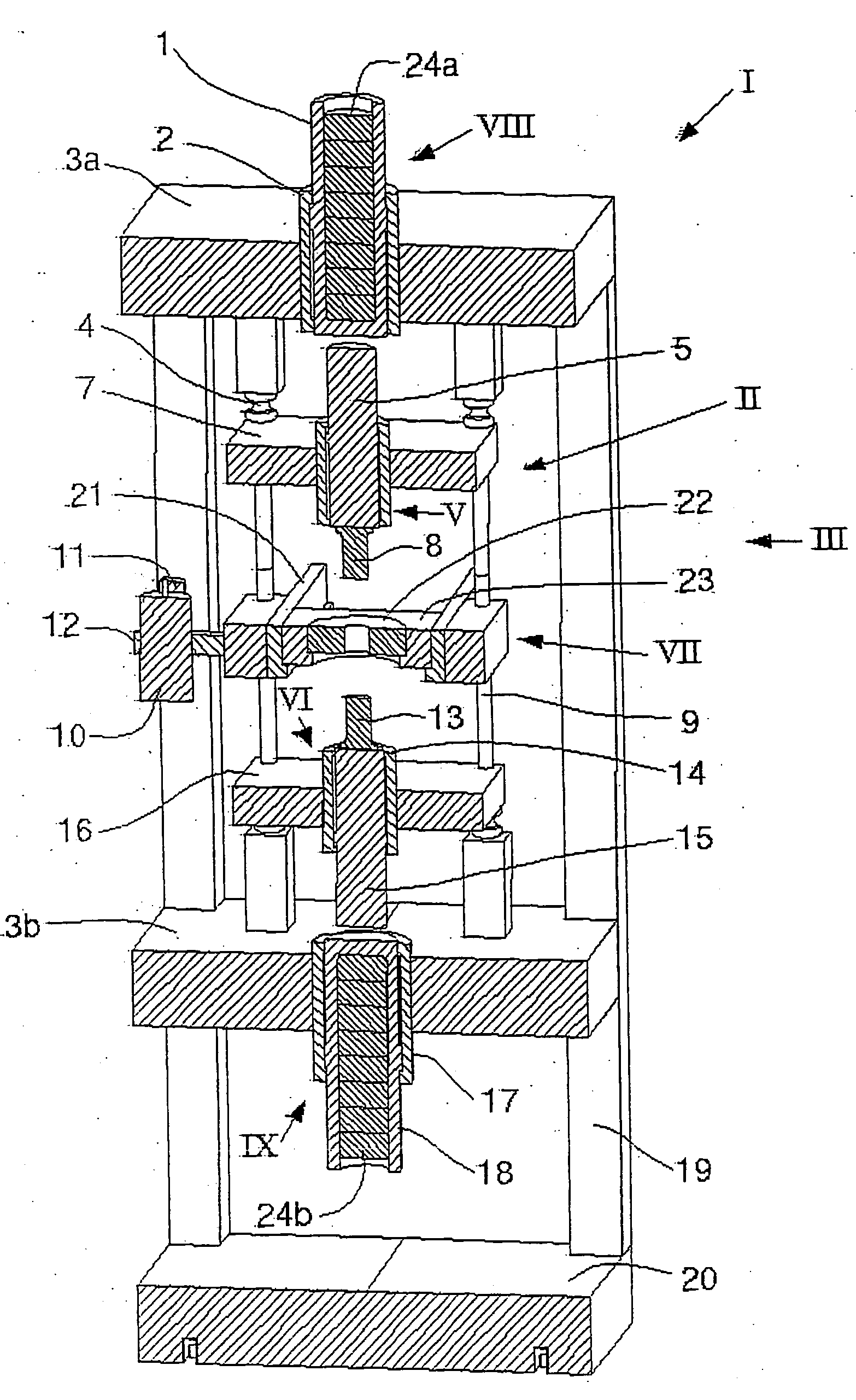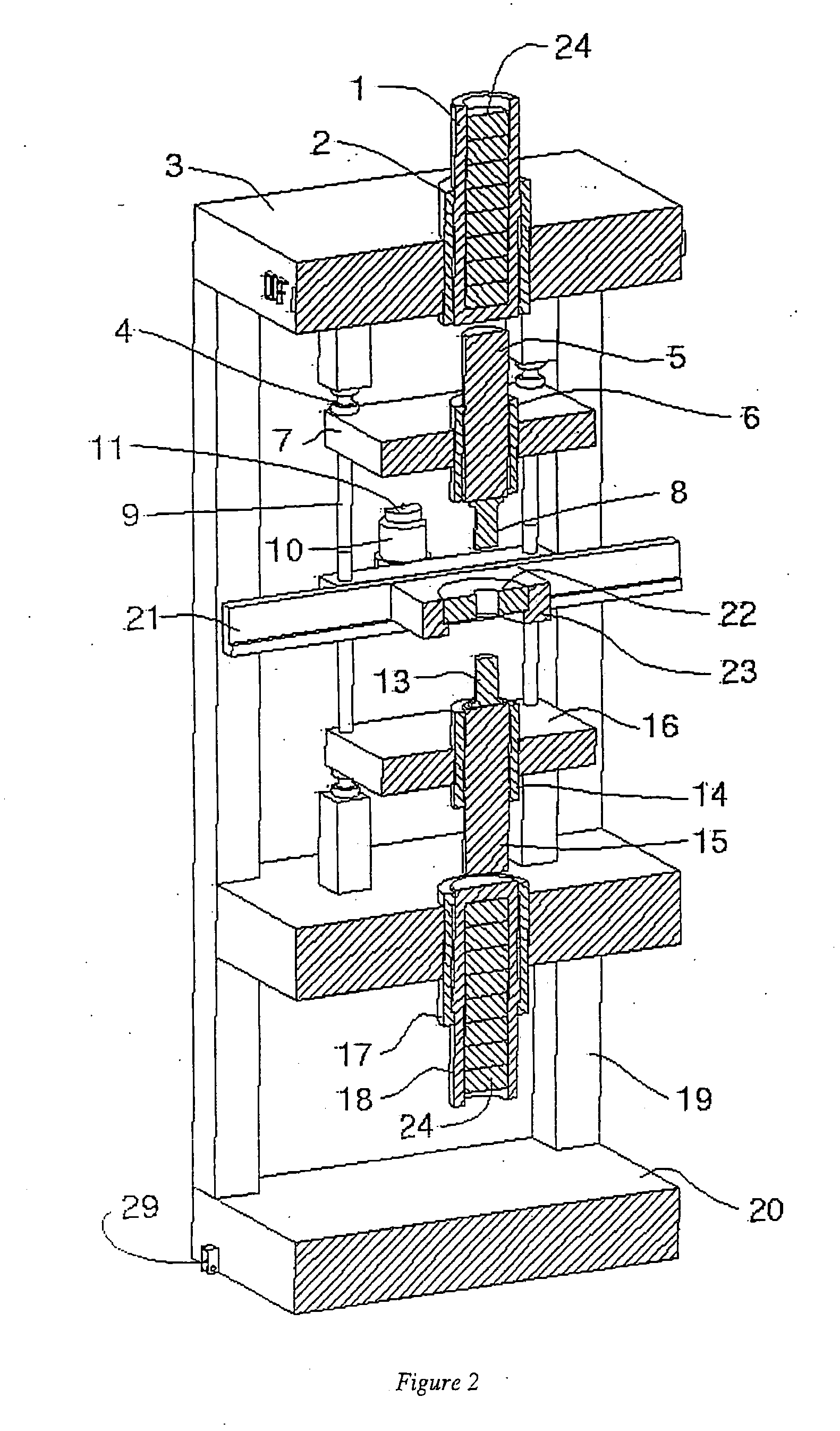Dynamic forging impact energy retention machine
a technology of energy retention machine and impact force, which is applied in the field of shock (impact) machines, can solve the problems of large risk, large joint size, unwieldy stands, etc., and achieve the effect of low cost and efficient production of bodies
- Summary
- Abstract
- Description
- Claims
- Application Information
AI Technical Summary
Benefits of technology
Problems solved by technology
Method used
Image
Examples
example 1
[0178] This example illustrates the superiority of the DFIER machine comprising an inner static press system and an outer impact system of a single side acting ram configuration compared to a single outer impact system alone as described for the percussion machine in patent WO 97 / 00751, the so called first generation machines.
[0179] The DFIER machine configuration comprising an upper inner press system including a central unit, an upper outer impact system, and a stationary anvil. The central unit is a carrier for a moulding die with a through hole. The anvil positioned below the central unit provides as a support for the lower punch positioned on the anvil. The inner system comprises a press unit including a ram housing, a press ram and a upper punch as well as a vibration unit. The press ram housing is open in both ends so that the press ram is protruding from the ram housing at both the upper and lower end. The said press ram is acting vertically and positioned above the central...
example 2
[0192] This example illustrates the superiority of having an inner and an outer system compared to an outer system alone with a counter-acting ram configuration, compared to an outer impact system alone with a counter-acting impact ram configuration as described for the impact machine described in patent WO 02 / 22289.
[0193] The DFIER machine comprises an inner press system, and an outer impact system. The inner system comprises an upper press unit, a lower counter-acting press unit, a central unit and a vibrator system. The upper press unit comprises an upper ram housing, an upper press ram and an upper punch attached to the upper press ram. The lower press unit comprises a lower ram housing, a lower press ram and a lower punch attached to the lower press ram. The central unit is positioned between the upper and the lower press units, and carries a moulding die with a protruding hole. The upper and lower press ram housings are opened in both ends so that the press rams are protrudin...
example 3
[0210] Comparing the single side action configuration with the counter acting machine configurations, the counter acting configuration is superior the single side configuration and the differences are summarised as: [0211] large and costly foundations are obsolete due to the force vector balance between the counter acting systems [0212] the energy fraction transferred to the material powder is much higher is the counter acting configuration due the the force balance and the two counter moving shock waves, whereas the shock wave from the single side configuration is transferred through the working material and out in the tool members [0213] the tool life span is increased with a counter acting configuration, due to the reduced required shock energy, resulting in lower production costs.
PUM
| Property | Measurement | Unit |
|---|---|---|
| shape | aaaaa | aaaaa |
| density | aaaaa | aaaaa |
| velocity | aaaaa | aaaaa |
Abstract
Description
Claims
Application Information
 Login to View More
Login to View More - R&D
- Intellectual Property
- Life Sciences
- Materials
- Tech Scout
- Unparalleled Data Quality
- Higher Quality Content
- 60% Fewer Hallucinations
Browse by: Latest US Patents, China's latest patents, Technical Efficacy Thesaurus, Application Domain, Technology Topic, Popular Technical Reports.
© 2025 PatSnap. All rights reserved.Legal|Privacy policy|Modern Slavery Act Transparency Statement|Sitemap|About US| Contact US: help@patsnap.com



